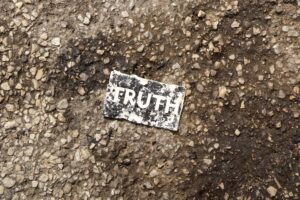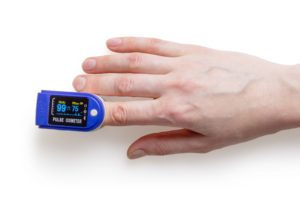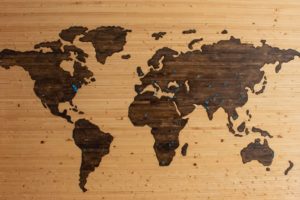
10 Scientists Who Moved to America
The United States has been known for collecting some of the greats throughout history, many of whom came from
various parts of the world. This does not mean that the reasons for their coming here were anything but tragic.
Many scientists had use here, and especially during World War 2, had good reason to leave their posts in Europe
to come here after being dismissed because of their heritage. (10 Scientists Who Moved to America)
—
This would be seen as a horrible mistake, because
this is what would lead to so many great discoveries in America, but it would also lead to the United States
becoming as powerful as it became and the defeat of many of it’s rivals. It’s not to say that it was all good, though
as much of what came after many on this list led to controversy. I’m going to be listing the 10 scientists
who moved to America.
10 Scientists Who Moved to America
1. Albert Einstein
Albert Einstein was a German-born theoretical physicist who was born in Ulm, Germany in 1879. He would end up
moving to Munich as an infant, and he later moved to Italy with his parents, studying in Switzerland. Starting
in 1896, he went to the the Federal Polytechnic School in Zurich to be trained as a teacher in physics and math.
He gained his degree in 1901, acquiring Swiss citizenship the same year and earing a doctorate degree in 1905 after being a working at the Swiss Patent Office.
—
It was his time spent during his job at the patent office that he produced much of his famous work. He made progress in Berne and became Professor Extraordinary at Zurich in 1909 before becoming Professor of Theoretical Physics at Prague. In 1914, be was appointed Director of the Kaiser Wilhelm Physical Institute and professor at the
University of Berlin, becoming a German citizen in 1914. The fine young scientist remained in Berlin until 1933,
renouncing his citizenship for political reasons related to Nazi Germany before moving to America, becoming
Professor of Theoretical Physics at Princeton. He would later become a US citizen in 1940 before retiring from
teaching in 1945.
—
Einstein is widely known for his work on gravitation and general relativity in 1916, publishing his paper and
contributing to other problems related to radiation and statistical mechanics. In the twenties, he wished to
construct unified field theories and worked on quantum theory, his work continuing in America and further working
on subjects related to monatomic gas, atomic transmission and relativistic cosmology. He continued to work until
his death, trying his best to unify physics and even becoming a leading figure in the World Government Movement.
2. Nikola Tesla
Nikola Tesla was a Serbian-American engineer and physicist born in Smiljan, Croatia in 1856. Tesla is widely
known for his breakthroughs in the production, transmission and application of electrical power. He not only
invented the first alternating current, he developed AC generation and transmission technology. Later
in life he struggled with an OCD related to the number 3 and working with success till his last days.
—
Early on, his brother was killed in a riding accident, scarring the young Tesla and contributing to what would
be a lifelong bout of mental illness. Tesla later studied math and physic at the Technical University of Graz and
philosophy at the University of Prague, never receiving a degree. While on a walk in 1882, the young soon to
be American came up with an idea for a brushless AC motor, making sketches of its electromagnets in the sand.
After some breakthrough sand-carving, he would move to Paris, getting a job repairing direct current power plants
with the Continental Edison Company and later moving to America two years later.
—
Tesla had a hard time making his own in the US, attempting to make his own Tesla Electric Light Company and soon
finding backers to support his research into alternating current. Between 1887 and 1888, he was granted more
than 30 patents for his inventions, being invited to address the American Institute of Electrical Engineers.
Catching the eye of George Westinghouse, he was hired and took place in the “Battle of the Currents”.
Tesla was given his own lab, but later left and began his patent journey in the 1890s, inventing electric
oscillators, improved lights and the high-voltage transformer, known as the tesla coil.
10 Scientists Who Moved to America
3. Enrico Fermi
Enrico Fermi was an Italian-American physicist who was born in Rome, Italy in 1901. He was raised attending
grammar school and showed a proficiency in physics and mathematics early on, later earning his doctorate degree
in physics at the University of Pisa in 1922. He was later rewarded a scholarship from the Italian Government
and spent a few months with Professor Max Born in Gottingen, Germany and later spent some time in the Netherlands
before returning to Italy and becoming lecturer.
—
In 1926, Fermi discovered the statistical laws that would later be known as Fermi statistics, later having
particles known as “fermions” given in his namesake. The next year, Fermi was elected Professor of Theoretical
Physics at the University of Rome and earning his Nobel Prize later on, staying there for 11 years before
moving to America to avoid Mussolini. Before moving, he did much research in Rome relating to electrodynamics,
spectroscopic phenomena, neutrons, and radiation.
—
When Fermi moved to the United States, he was appointed Professor of Physics at Columbia University in New York.
Being the leading expert in neutrons, he later joined the Manhattan Project and created the first controlled
nuclear reaction and atomic pile. He became an American citizen in 1944 and was later professor at the Institute
for Nuclear Studies at the University of Chicago, turning his attention to high-energy physics.
4. Hans Bethe
Hans Bethe was a German-American physicist who was born in Strasbourg, Germany in 1906. He went to grammar school in Frankfurt then studied at the University of Frankfurt and University of Munich, earning his doctorate degree
in theoretical physics in 1928. He later went on to be an instructor in Frankfurt before moving to the University
of Munich, having had a travel fellowship of the International Education Board and going to England and Italy.
He would later lose his position at the University of Tubingen after the Nazi powers came to be and moved to
England in 1933, becoming a lecturer at the University of Manchester and Bristol before moving to the United States.
—
In the United States, Bethe was appointed as an assistant professor at Cornell University in Ithaca, New York.
He later was promoted to professor in 1937, later working at MIT where he worked on microwave radars before
working in Los, Alamos Scientific Laboratory, helping produce the first atomic bomb. Much of what Bethe enjoyed
working on involved atomic nuclei, studying nuclear reactions and developing the Bohr’s theory more quantitatively.
Much of his other works included research on star energy, and he would end up earning the Nobel Prize for his work
in nuclear reactions, much of his earlier work being on atomic physics, collision theory, and electrodynamics.
10 Scientists Who Moved to America
5. Wernher von Braun
Wernher von Braun was a German-born American aerospace engineer who was born in Wirsitz, Germany in 1912. He is famously known for his work in rocketry and space exploration, but unfortunately, he started in Nazi Germany.
Braun started off early, but he lacked a specialty in physics and math, even though he had an early fascination
with astronomy early on. He was inspired by interplanetary space and rocket pioneers, later learning how to
excel and learning the difficult math involved before leading his class.
—
Braun later enrolled in the Berlin Institute of Technology, joining the German Society for Space Travel and
earning his degree in mechanical engineering before entering the University of Berlin. He later was arranged
a research grant from the Ordnance Department, receiving his PhD in physics in 1932 and doing his thesis on
military secure rocket engines. By December of 1934, he and his crew successfully launched 2 rockets, the
Nazis having come into power. The V-2 and A-4, with the help of Braun as technical director, were successfully
launched, Nazi Germany having the best rocket technology by 1944.
—
Braun and his team were eventually surrendered to US troops, them having been brought to the US Army Ordnance
Corps test sites in New Mexico and testing captured V-2 rockets. Braun eventually moved to Huntsville, Alabama
in 1952, he became technical director of the US Army ballistic-weapon program, becoming a citizen in 1955 and
being thrust into the spotlight thereafter. He later helped launch the first US satellite and joined NASA before
becoming vice president at Fairchild Industries, an aerospace company.
6. John von Neumann
John von Neumann was a Hungarian-American mathematician and physicist born in Budapest, Hungary in 1903.
Neumann was known as being a child prodigy, eventually leading him to become one of the worlds best mathematicians by his mid-twenties. He is known for his important work in set theory, touching many fields of science with his influence, including quantum theory, automata theory, and even economics and defense planning. He was also the pioneer of game theory and stored-program digital computer.
—
Von Neumann grew up with prestige, growing up in a highly affluent Jewish family and learning languages and math from a tutor. He would end up in a prestigious secondary school, his family and him escaping a short-lived
communist regime in 1919. Neumann would end up studying chemistry and mathematics, earning a degree in chemical engineering in Zurich and a doctorate in mathematics from the University of Budapest. He first made a career in Europe before arriving in American in 1930, having published papers for logic, set theory, and more.
—
He was later asked to lecture on quantum theory at Princeton University in 1929, becoming one of the first
professors at the Institute for Advanced Study in New Jersey. When Hitler came to power, Neumann relinquished
his German academic posts, moving up his post through Princeton University and becoming known as a joker. He
later got involved in the Manhattan Project, helping out with implosion design and later becoming more a
consultant to the government and industry.
10 Scientists Who Moved to America
7. Eugene Wigner
Eugene Wigner was a Hungarian-American theoretical physicist who was born in Budapest, Hungary in 1902. He was born to a Jewish family, finding an interest in math and science at an early age. He would later on go to Berlin for college and study chemical engineering, working for the Kaiser Wilhelm Institute starting in 1927. There, he would work
on x-ray crystallography, later extending his research to atomic nuclei and moving to teach physics at Princeton
University for five years.
—
Wigner would end up playing a large role in the Manhattan Project, being a contributor by collaboration and
being one of the few who were involved in the 1939 letter to President Roosevelt. During the project, Wigner
led a group responsible for the design of the production nuclear reactions that would convert uranium into
weapons grade plutonium. In 1946, Wigner became the Director of Research and Development at Clinton Laboratories,
later returning to Princeton and served on many government bodies until he received his Nobel Prize in Physics
in 1963 for his contributions to the theory of the atomic nucleus and the elementary particles.
8. Edward Teller
Edward Teller was a Hungarian-American theoretical physicist who was born in Budapest, Hungary in 1908. Teller
is widely known for his participation in the Manhattan Project, later leading the way for the development of
the world’s first thermonuclear weapon, known as the hydrogen bomb. Teller earned his first degree in chemical
engineering in Karlsruhe, Germany, leaving for Munich and earning his doctorate in physical chemistry in 1930.
—
He studied under Niels Bohr, studying atomic physics and teaching at Gottingen before moving to the United States and teaching at George Washington University in Washington DC. Here, he discovered things related to radioactive
decay, later involving himself in nuclear weapons after nuclear fission had been discovered and a call to action
had been made by Roosevelt. He became a citizen by 1941, joining Enrico Fermi’s team at the University of Chicago
to help produce the first self-sustaining nuclear chain reaction.
—
He would later work for Oppenheimer in Berkeley before moving to Los Alamos, New Mexico in 1943. Teller would
later find great interest in creating more nuclear warheads, his time spent at the laboratory being between work
on the fission bomb and his own ideas related to a thermonuclear hydrogen fusion bomb. After his time at Los
Alamos, he spent his time with the Nuclear Studies at the University of Chicago, later helping create the bomb
of his dreams and even helping be the reason for another laboratory being created, being given the Presidential
Medal of Freedom in 2003.
10 Scientists Who Moved to America
9. Leo Szilard
Leo Szilard was a Hungarian-American physicist who was born in Budapest, Hungary in 1898. He developed an interest in physic early on, attending officer’s training school in World War 1 and leaving for Berlin in 1919. He studied
Engineering there, later studying physics and earning his PhD in 1922 while becoming friends with Albert Einstein.
Szilard would then move to England, developing the idea of a nuclear chain reaction in 1933 and working at the
Clarendon Laboratory until 1937, later becoming a visiting lecturer in the United States.
—
In 1940, Szilard became an American citizen and moved to New York, working at Columbia University and collaborating with other known scientists. He would later be involved in blocking publication of nuclear research and sending the famous letter to President Roosevelt in 1939 about the possibility of making a nuclear weapon to ward off Nazis. Szilard would later secure uranium and become chief physicist at the Chicago Metallurgical Laboratory from 1942 to 1946, working for Arthur Compton and helping create the first neutronic reactor.
—
He would later find interest in molecular biology after the war, helping find the Salk Institute for Biological
Studies. He would also work in biophysics and radiology, continuing his work in biological research, having had
many contributions to nuclear reactions and thermodynamics.
10. Emilio Segrè
Emilio Segre was an Italian-American physicist who was born in Rome, Italy in 1905. He went to school in Rome and entered the University there as a student of engineering. Emilio would later change to physics and gained his doctorate in 1928 under Enrico Fermi. He would spend time in the army for a year before becoming assistant professor at the University of Rome, later becoming Director of the Physics Laboratory at the University of Palermo. Segre eventually moved to the United States in 1938 and became a research associate at the Radiation Laboratory, becoming a lecturer at the same place.
—
He would later work at Los Alamos for the Manhattan Project before returning to Berkeley where he first became
a research associate back in 1938, becoming professor of physics in 1946. Much of his work was related to atomic
and nuclear physics, making contributions to spectroscopy, radiochemistry, and further nuclear physics.





Recent Comments